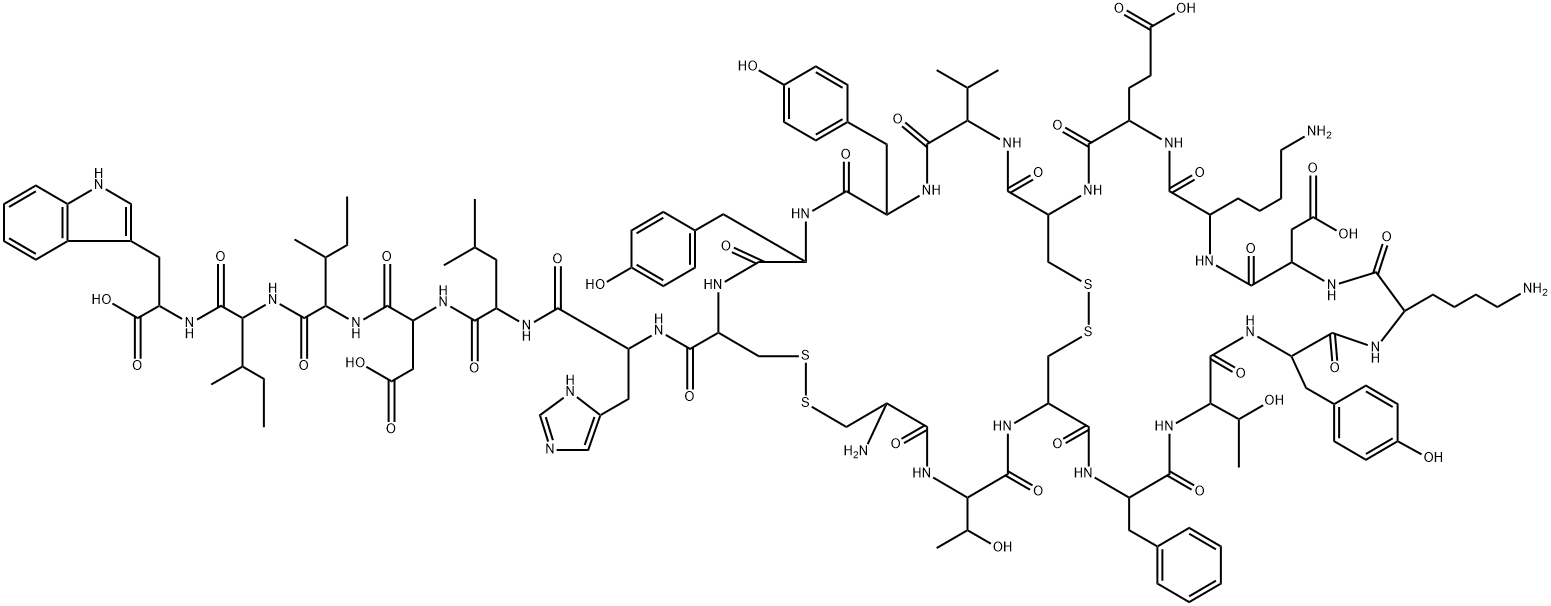人内皮素3

人内皮素3 性质
| 密度 | 1.285±0.06 g/cm3(Predicted) |
|---|---|
| 储存条件 | −20°C |
| 溶解度 | 5% acetic acid: 0.5mg/mL |
| 形态 | 粉末 |
| 颜色 | 白色 |
| 生物来源 | rabbit |
| 水溶解性 | Soluble to 1 mg/ml in water |
人内皮素3 用途与合成方法
ET-RA, ET-RB
The endothelins (ETs) are a family of 21-amino-acid vasoconstrictor peptides comprising three distinct isoforms: ET-1, ET2 and Endothelin-3. Endothelin-3 is detected in plasma, heart, brain and vascular smooth muscle cells (VSMCs). The surface enzymes of VSMCs break down big Endothelin-3 to the corresponding mature peptide, Endothelin-3. Endothelin-3 down-regulate endothelin ETA receptor expression in coronary artery VSMCs without affecting receptor density or functional ETA receptor responses. By contrast, high concentrations of Endothelin-3 (100 nM) increase the expression of ETB receptors but abolish the vasoconstrictor response of the receptors, possibly due to the desensitizing effect of Endothelin-3. Endothelin-3 stimulates ENCC adhesion to various ECM components. Endothelin-3 induces rapid changes in ENCC shape and protrusion dynamics favouring sustained growth and stabilization of lamellipodia, a process coincident with the increase in the number of focal adhesions and activated β1-integrins.
Endothelin-3 at low concentrations may attenuate inflammatory responses via ETB2 activation and NO production. Endothelin-3, which acts mainly on ETB, at low concentrations specifically inhibited platelet-activating factor (PAF)-induced paw oedema, whereas neither ET-1 nor Endothelin-2, both of which act on ETA and ETB, showed inhibitory activity. The inhibition by ET-1 and Endothelin-3 (each 0.5 pmol/paw) in the presence of BQ-123 (66.4 ± 6.7 % and 65.4 ± 22.6 %, respectively), is comparable to that by Endothelin-3 (0.5 pmol/paw) alone (65.4 ± 10.9 %), whereas neither ET-1 nor Endothelin-3 in the presence of BQ-788 showed inhibitory activity.

